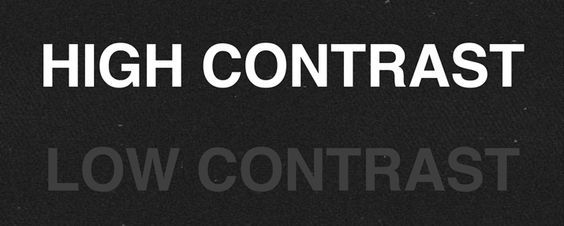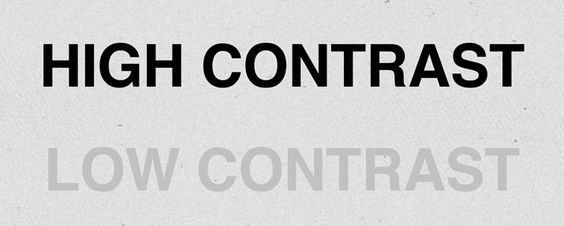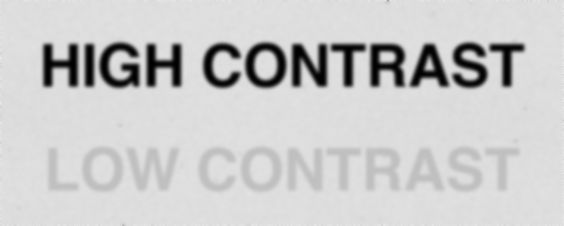The optical term “contrast” of an image is pretty much what we would expect from our daily use of the word.

However, we have to distinguish global contrast …

… from local contrast :

The global contrast in the two images above is about the same, however the local contrast (the change from pixel to pixel) is less high in the lower image, because of the slight blurring.
The local contrast is described by the MTF-curve.
Contrast can be a difference in brightness but also a difference in color
Contrast heavily depends on environmental light. Switch off the light at night and all contrast is gone!
Contrast can be increased or reduced by changing the light situation.
Red writing on a white paper becomes invisible under red light. Both paper and writing look red, the contrast is gone.
Yellow Writing on a white paper is nearly invisible on the image of a monochrome camera. Illumination with blue light increases the contrast nicely.
Yellow Writing on a white paper is nearly invisible on the image of a monochrome camera. Illumination with blue light increases the contrast nicely.
Formulas used to measure contrast:
- Weber contrast

(Feature -background) / background - Michelson contrast

Difference of intensities divided by sum of intensities. Often used in image processing. - RMS contrast (Root Mean Square Contrast)

Standard deviation of the pixel intensities.